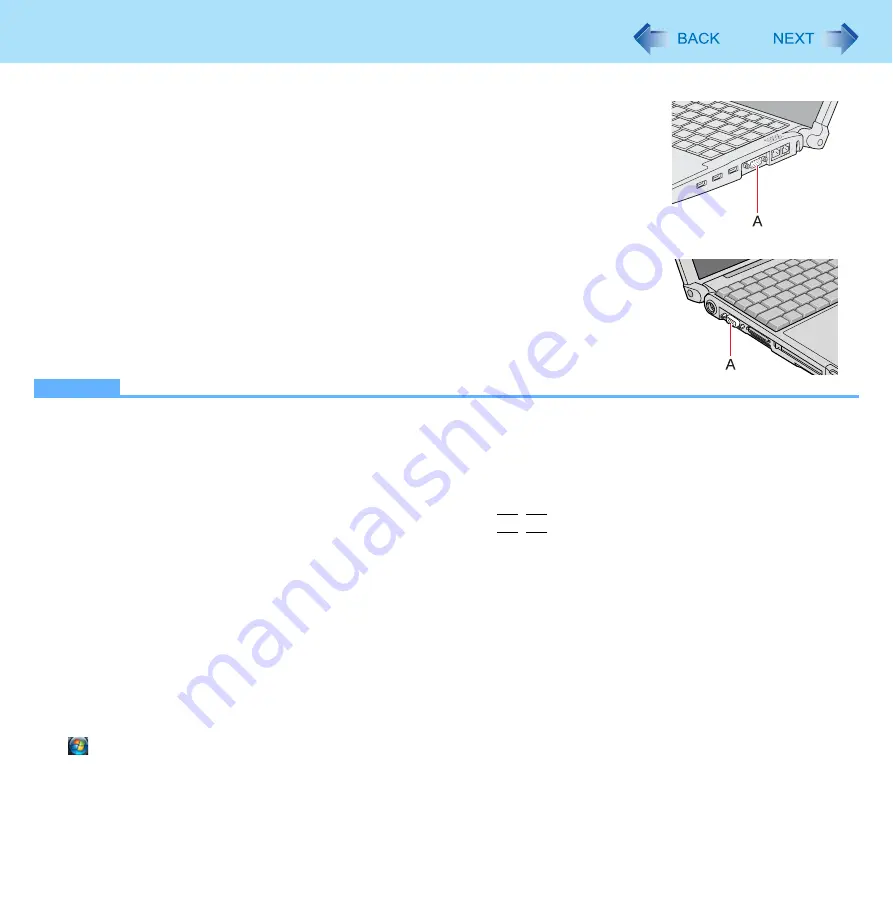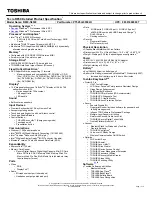
74
External Display
You can switch the output destination to an external display.
Connect the external display to the external display port (A).
NOTE
z
After resuming from sleep or hibernation, or restarting the computer, the output destination may not be the same as
the one selected in the previous status.
z
Do not connect or remove the external display during sleep or hibernation.
z
It may take some time to switch between displays depending on the displays used.
z
When you use high resolution displays, the display color, resolution or refresh rate may be changed, switching to
[Notebook] in [Intel(R) Graphics Media Accelerator Driver for Mobile].
We recommend you to switch the output destination by pressing
Fn
+
F3
.
z
When you change the output destination after Windows starts up, do not press any key until switching is complete.
z
You cannot use the simultaneous display until Windows starts up.
z
When you use an external display or extended desktop, click [Display Settings] and set a suitable number of colors,
resolution, or refresh rate for each display.
Depending on the settings, some external displays may be distorted or displayed incorrectly. In this case, check the
refresh rate setting.
z
When you use the simultaneous display, DVD-Video, MPEG files and other motion image files may not be played back
smoothly.
z
Carefully read the instruction manual of the external display.
z
When connecting an external display that does not conform to the Plug & Play standards, select the display driver
accordingly in the following menu, or use the driver disc supplied with the external display.
(Start) - [Control Panel] - [Adjust screen resolution] - [Advanced Settings] - [Monitor] - [Properties] - [Driver] -
[Update Driver]
z
<Only for CF-W8/CF-T8 Series>
If you connect an external display via the mini port replicator, you cannot use the external display port on the com-
puter.
CF-F8 Series
CF-W8/CF-T8 Series
















































